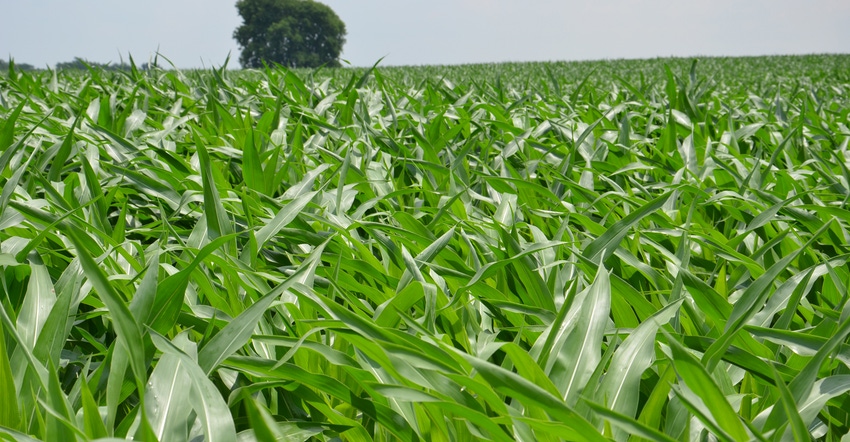
If you live in northwest Indiana and nitrogen costs 40 cents per pound with corn at $3.50 per bushel, Purdue University’s recommendation is to apply a total of 183 pounds of nitrogen per acre. That’s the economic optimum nitrogen rate for your region based on 13 years of data collected by Bob Nielsen, Purdue Extension corn specialist, and Jim Camberato, Purdue Extension soil fertility specialist.
The specialists also determined average agronomic optimum nitrogen rates. The AONR is the rate expected to produce the most yield regardless of cost. The EONR should produce the highest net return per dollar invested.
Annual variation
Nielsen and Camberato would be the first to say that even if you apply the AONR or EONR for your region, it might not be the best rate for 2019. “Specific AONR values often vary from field to field and year to year for a single field,” Camberato says.
Here’s an example: For the 10-year period from 2006 through 2015, the average AONR for rotation corn at their research site at West Lafayette, Ind., was 197 pounds per acre. However, the AONR for individual years ranged from 130 pounds per acre to 262 pounds per acre. That’s a twofold difference.
“The year-to-year variation in optimal nitrogen rate isn’t surprising given the annual variability in how much nitrogen the soil supplies, fertilizer nitrogen loss and weather,” Nielsen says. “Weather influences both the amount of nitrogen the soil can supply and fertilizer nitrogen efficiency. Crop health, nitrogen uptake and nitrogen use efficiency are also influenced by soil characteristics and the weather.”
Fine-tune
So how much total N should you apply in 2019? Obviously, you can’t predict the weather. Here are some ways to fine-tune nitrogen rates. For more details, read the Purdue report on nitrogen management guidelines.
Start with average recommendations for your region. Use tables found in the aforementioned report to find a starting point.
Incorporate fertilizers with urea. This eliminates volatilization losses. As an alternative, apply with a urease inhibitor.
Consider N inhibitors. You can use inhibitors with anhydrous ammonia, urea or liquid nitrogen to delay conversion of ammonium to nitrate. N loss occurs more quickly from the nitrate form.
Get placement and timing right. Proper placement and timing may be more effective than inhibitors in preventing nitrogen loss, Camberato says. However, there isn’t data showing that split applications involving late-season N consistently yield more than traditional sidedress applications.
Conduct a pre-sidedress nitrate test. This test has proven most effective to estimate the amount of nitrogen the soil will supply in manured fields or those with very high organic matter content, the specialists note.
Use other tools. Other tools may help you get a handle on how much nitrogen remains while you could still apply more. These include a chlorophyll meter or active optical sensors to evaluate nitrogen status. In both cases, you need a reference strip where a high nitrogen rate was applied.
Try a post-season report card. The end-of-season nitrate stalk test won’t help adjust this year’s rate, but it might provide clues as to whether this year’s rate was too high or too low. The test determines nitrate remaining in the stalk. Results can be difficult to interpret.
About the Author(s)
You May Also Like




